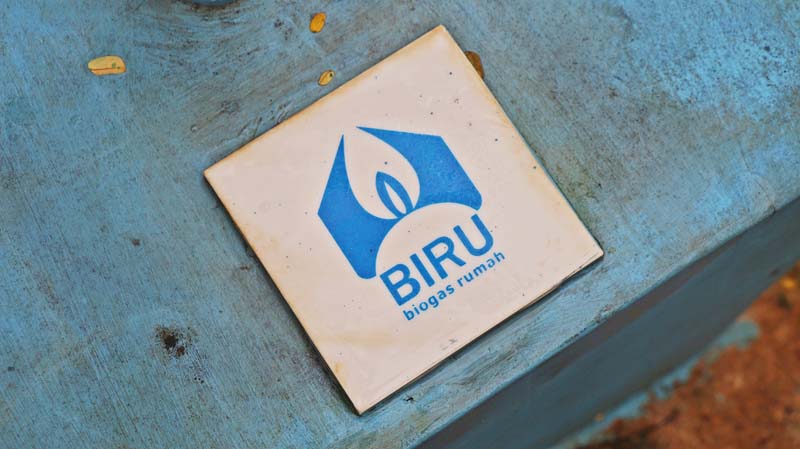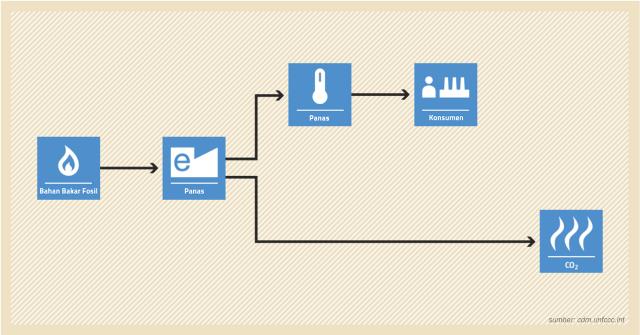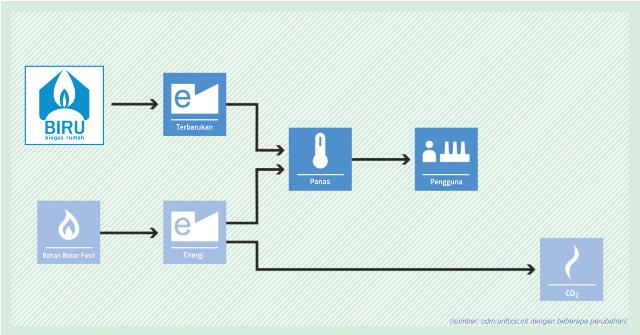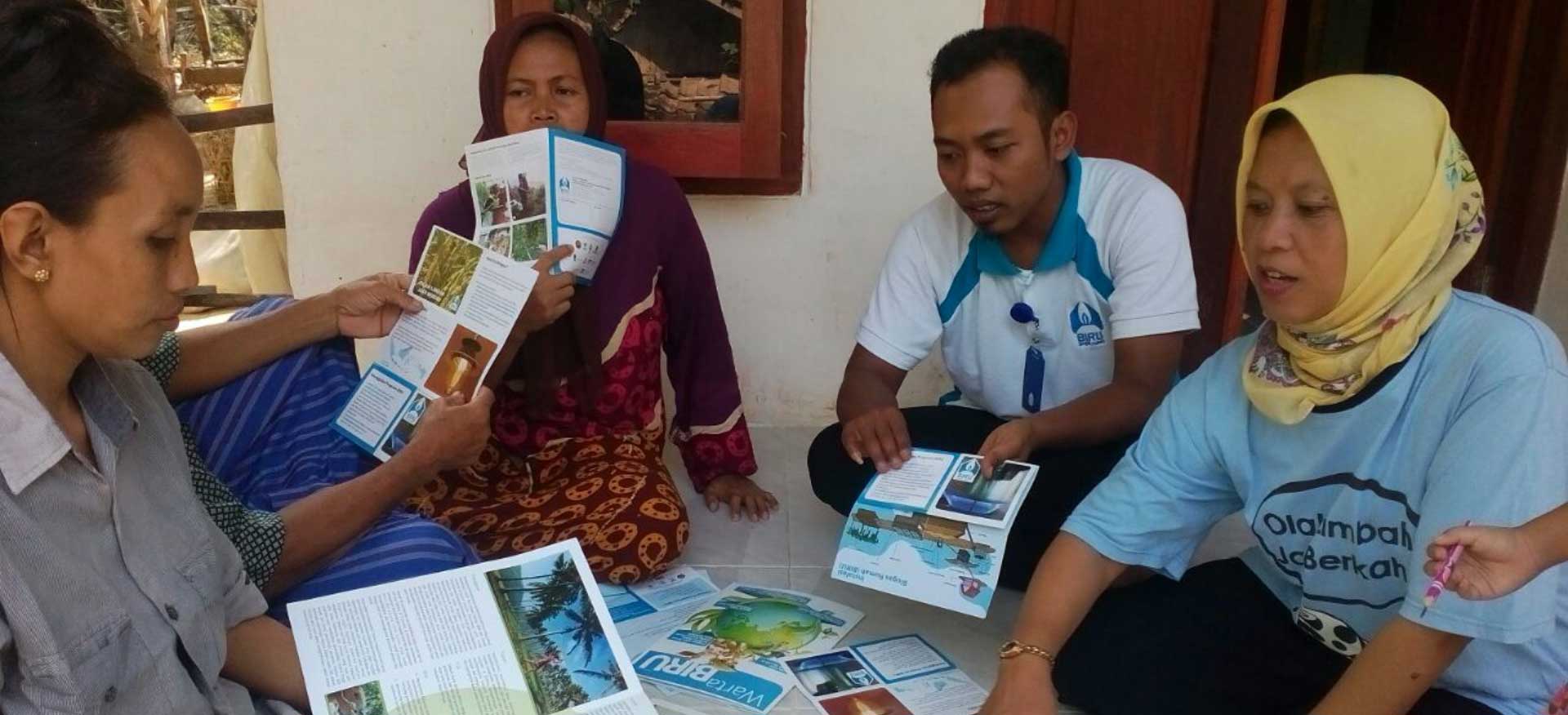Carbon Trading and Domestic Biogas (BIRU) Contribution

The issue of environmental pollution along with its impacts due to the greenhouse gas have been a global attention since the end of 20th century. This issue is then followed-up in the form of Kyoto Protocol signing by 188 countries on December 11, 1997. In general, Kyoto Protocol contains an agrement on the greenhouse gas emission reduction within several periods as well as responsibilities to minimise the impacts of greenhouse gas toward climate changes. Eveh though the methods of greenhouse gas emission reduction is left to each respective country, Kyoto Protocol however provides additional options in the forms of:
- Emission trading.
- Clean development mechanism.
- Joint implementation.
Similarities of those three options above are to turn the six types of greenhouse gases, including carbondioxide (CO2), methane (CH4), nitrous oxide (N2O), hydrofluorocarbons (HFC), perfluorocarbon (PFC), as well as sulfurhexafluoride (SF6) (sometime all of those six types of greenhouse gas are simply referred as carbons), into new trade commodities in a unit equivalent to ton-CO2 (tCO2).
Responsibilities upheld through “common but differentiated responsibility” concept separate the burden of responsibilities on developed countries as the largest greenhouse gases emitters. In practice, emission trading and joint implementation described in Kyoto Protocol are only carried out by developed countries rather than by developing countries. Meanwhile, in clean development mechanisms, developed countries act as the parties which are “penalised” over the emissions they produce in the form of supporting developing countries through an ecologically friendly development process. Hence, it is no wonder that the price of traded carbon on all of those above mentioned three options depend on the prices at carbon marketplace in developed countries.
On the trading methods of emission objects, the actual trading happens on the rights of greenhouse gas emission. In general, parties involved in this emission trading is electricity power plants, manufacturing industries, and airline companies. The flow of method implementation may be describes simply as follow:
- Kyoto Protocol determines the initial agreement over the magnitude of greenhouse gas emission reduction for each country.
- The government of each respective country will determine their policies on the how much emission is permissible for each party involve in emitting its greenhouse gases (industry, transportation, and so forth) at the beginning of the year.
- At the end of the year, the government will evaluate the amount of greenhouse gases emitted by respective parties. The ones whose greenhouse gas’ emissions exceed the maximum allowable limits, shall buy “the rights to emit greenhouse gases” from the parties whose greenhouse gas emissions are below the maximum allowable limits.
- The outcome of such evaluation will then be used as a reference from the respective government to determine the emission limit in the subsequent year.
Critique addressed to this method is known as zero sum emission. It means the total amount of overall emissions have not changed at all. Nonetheless, the facts in reality are that the magnitude of carbon emission have been consistently reduced. For example, total amount of carbon emission reduced at EU ETS (European Union Emission Trading System) is 1.74% annually.
As for the clean development method, the constructed ideas are the magnitude of potential greenhouse gas emission reduction through a project in comparison to a normal development course without the presence of such project. Hence, a calculation of an estimated amount of greenhouse gas emission is undertaken for two different scenarios. One scenario excludes the project presence (referred to as a baseline) while the other scenario includes the project presence, followed by the magnitude of greenhouse gas emission calculated by the difference between the two aforementioned scenarios. Therefore, in this clean development method, it is necessary to have a variety of calculation methods, depending on the types of project undertaken and their phases. It is somewhat more complicated in comparison to the emission trading system. The amount of greenhouse gas emission successfully reduced through a project may then be certified through a certification known as Certified Emission Reduction (CER). These CER certificates may then be traded to the developed countries and therefore this system is more flexible and non-binding.
How about the Roles of Domestic Biogas (BIRU)?
Domestic Biogas (BIRU) Programme contributes its roles in Kyoto Protocol through a clean development mechanism in which it includes the types of mitigation on greenhouse gas emission accomplished through renewable energy. Mitigating this type of greenhouse gas emission is accomplished by reducing fossil fuel consumption through the utilisation of renewable energy resources. These renewable energy resources include among others biomass or biogas. The baseline scenario is the consumption of fossil fuel to generate thermal energy (heat) which is then further utilised by consumers with a side effect of high greenhouse gas emission as presented on the illustration below.

BIRU Programme is then selected in the project scenario to reduce – or evan entirely substitute – the use of fossil fuel as the source of thermal energy. This project scenario is then expected to reduce carbon emission as a result of fossil fuel burning, as presented by the illustration below.

Altogether, BIRU Programme also contributes to the reduction of methane gas emission to the atmosphere. Emission of this gas is 21 times more harmful in comparison to CO2 gas emission (a release of 1 ton of methane gas is equivalent to a release of 21 tons of CO2 gas). This reduction of this gas emission is made possible as the methane gas produced through anaerobic process inside the reactor is utilised for cooking, lighting, or even powering a generator to produce a small-scale electricity. Hence, every unit of biogas reactor constructed through BIRU Programme is one of the measures to reduce the possibility of global warming. (Jihan A. As-sya’bani)

